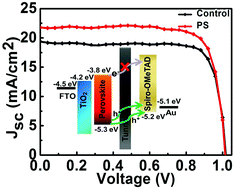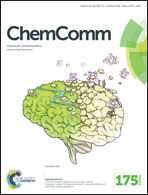Interface engineering via an insulating polymer for highly efficient and environmentally stable perovskite solar cells†
Abstract
A tunnelling contact of polystyrene nanofilm was introduced for the first time at the interface of perovskite/hole transfer layer, leading to a significantly reduced charge recombination. Moreover, such a polymeric contact worked as a hydrophobic encapsulation layer for effectively protecting the perovskite against humidity. The resultant PSCs displayed a peak efficiency of 17.80% (vs. 15.90% of the control cell) and an enhanced stability.


 Please wait while we load your content...
Please wait while we load your content...